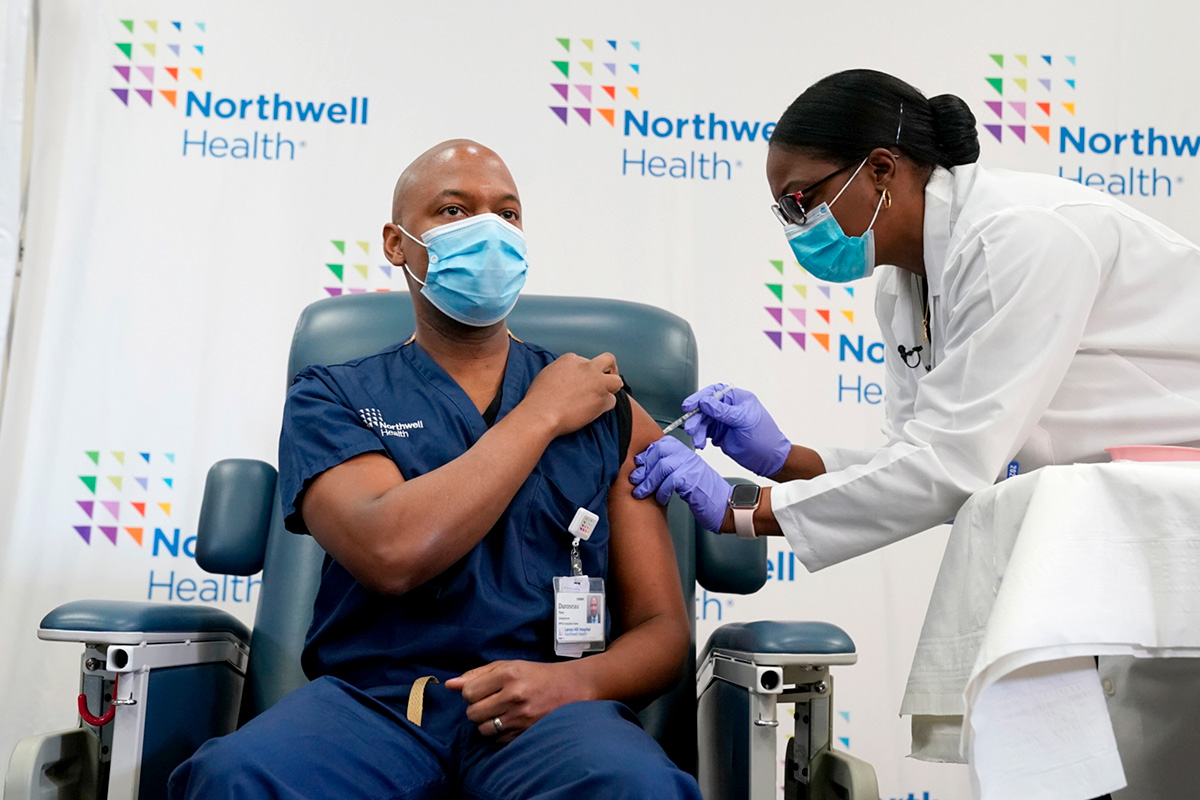Americans are receiving doses this week of the first approved vaccine for coronavirus. The remarkably rapid development of several vaccine candidates that promise to confer safe and effective protection against COVID-19 is an extraordinary scientific achievement. But while a vaccine may be necessary to ultimately overcome this virus, it will not be sufficient to win the war against this enemy — at least not in the short run.
With winter approaching and infection rates spiking, prevention — social distancing, frequent hand washing and wearing masks — still remains our best defense. Here’s why.

TEACHABLE MOMENT John Allegrante believes the success of the vaccine could change public misperceptions about vaccines in general. (Photo: TC Archives)
First, distributing the vaccine and preparing doses for 330 million Americans is a daunting and unprecedented challenge. The three other vaccines that are in Phase 3 clinical trials also require getting two shots within one month of each other. A national COVID-19 vaccination campaign will require a phased approach to deliver those doses and will unfold over many months. It will involve coordinating and mobilizing a broad range of national, state and local community actors, including pharmacies, physicians, public health departments and hospitals.
With winter approaching and infection rates spiking, prevention — social distancing, frequent hand washing and wearing masks — still remains our best defense.
Syringes, needles and special refrigeration capabilities for storing and transporting the vaccine at sub-zero temperatures will also be required before vaccines can be administered on a massive scale. And all of this must be accomplished at a time when, because of the failed policies of the current administration and the impact of the pandemic itself, the public health workforce is depleted and public health preparedness is weak.
In addition, while the flu vaccine developed each year usually lasts for the duration of each annual flu season, we don’t yet know what the durability of a COVID-19 vaccine will be. Viruses mutate, evolve and undergo what is called antigen shift, so vaccine formulas may have to be changed year-to-year to continue to confer protection.
Distributing the vaccine and preparing doses for 330 million Americans is a daunting and unprecedented challenge.
Second, the National Academy of Medicine and the U.S. Centers for Disease Control and Prevention (CDC) have released guidelines that prioritize healthcare providers, first responders and other essential workers. The guidelines also prioritize the elderly in nursing homes (where a staggeringly high percentage of transmissions have occurred) and those at increased risk due to age and accompanying conditions such as cancer, diabetes, and cardiopulmonary diseases. So, the average American may not have access to a vaccine until late spring or early summer.
Even when average Americans do receive the vaccine, they will not be entirely free of risk because of substantial segments of the population that either refuse to get vaccinated or for whom the vaccine simply is not effective. While the 90-to-95 percent effectiveness of the vaccines now in development is remarkable, those numbers also mean that large numbers of people who get the vaccine may not be rendered immune and thus could become or remain an asymptomatic carrier of the virus. So, Americans should remain vigilant even after they are vaccinated.
Third, it will be a long time before we achieve “herd immunity” — the state in which at least 70 percent of a community becomes immune to a disease either through having been infected or vaccinated. Even though the CDC Advisory Committee on Immunization Practices recommends that all Americans get an annual flu vaccination, only 45 percent of Americans 18 years or older got a flu shot in 2018-19. Thus, many people delay or refuse to accept vaccines for measles and other preventable communicable diseases. Such vaccine hesitancy is a complex phenomenon that is determined, to varying degrees, by complacency, convenience, confidence, fear and lack of knowledge and understanding. The bottom line: Not everyone is likely to perceive the benefit of vaccination — especially because the COVID-19 vaccines, even though proven safe and effective, have been produced at “warp speed.” Hopefully, though, success will be a teachable moment for changing minds around the broader issue of vaccine safety.
Not everyone is likely to perceive the benefit of vaccination — especially because the COVID-19 vaccines, even though proven safe and effective, have been produced at ‘warp speed.’ Hopefully, though, success will be a teachable moment for changing minds around the broader issue of vaccine safety.
Vaccines are on their way, and that’s good news. But COVID-19 — like the 1918 flu pandemic — is likely to remain in the population and recur in waves in the United States and elsewhere.
Although we’ll ultimately get past this, for now, let’s make this coming holiday season a good and safe one. Americans — all of us — will need to act in concert to ensure vaccination success, both by embracing the vaccination effort without fear and recognizing the potential limitations of the vaccines. And we’ll still need to maintain social distancing, hand hygiene and wearing of masks to protect ourselves and others for months to come.
Americans — all of us — will need to act in concert to ensure vaccination success, both by embracing the vaccination effort without fear and recognizing the potential limitations of the vaccines.
President-Elect Biden has asked Americans to wear masks during his first 100 days in office. Let’s do it. We have to — because our lives, and the lives of those we love, really do depend on it.
John P. Allegrante is Professor of Health Education at Teachers College, Columbia University, and Adjunct Professor of Sociomedical Sciences at the Columbia University Mailman School of Public Health. He served as a behavioral science expert from 2013 to 2018 on a federal advisory committee that advises the U.S. Centers for Disease Control and Prevention.
